Lockwood Custom Opticsat the
Winter
Star Party 2016
Cooler than normal, but clear skies and
new friends appear |
It was a windy, cloudy, gray, cool, slightly rainy Sunday morning as I dragged my butt out of bed, ate breakfast, packed up, and headed south from a relative's place down the east coast of Florida towards the Florida Keys. I wanted to get an early start to hopefully avoid the seemingly inevitable traffic backup that frustrates travelers (or convinces them to stop for margaritas) as they try to get into the Florida Keys. As it turns out, I had chosen wisely. It was nearly clear sailing (except for the impatient idiot tailgaters) as I cruised down I-95, then the Florida Turnpike, and then US 1 into the much sunnier, and somewhat warmer Florida Keys. The backup from hell was not there, and with my only backup being a red light or three, I arrived in Marathon in plenty of time for a delicious seafood lunch. As I stepped out of the car at a gas station to fill up and make some phone calls before lunch, I was greeted with a stiff breeze and fairly cool temperatures. Clearly the cold front had made it to the Keys, and I hoped that the 2016 Winter Star Party would not be as cool as WSP 2015. 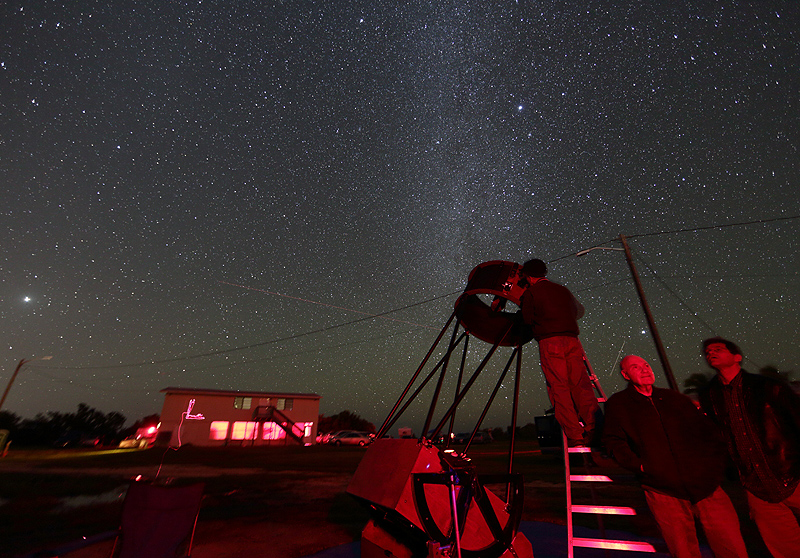 After making contact with the WSP organizers, I met up with Dr. Mike Reynolds and his wife at the rental house for Winter Star Party speakers, where I would sleep for the next week. We visited for a while, and then, after unloading some of my things, I headed out for lunch and to make the final 15 mile drive to the WSP site on Scout Key. John Pratte arrived just before me. We were allowed a day early because I was giving a talk. We found a rather wet site, but not as flooded as it had been the previous year during some very strong thunderstorms. We still decided to set the telescopes up in the same place, which was a dry peninsula in the midst of some standing water. The water slowly receded over the next few days, and we never had any issues with it. I helped John Pratte set up his 32" f/3.6 telescope, and then wandered around the observing field for a bit. I ran into Darren Drake and Dan Joyce, who had also fled the Chicago winter to more reasonable latitudes, at least temporarily. They are only about a three hour drive north of me, and I couldn't bring myself to live farther north than I already do in Illinois, and certainly not in the light-polluted, over-taxed, toll-infested, often gridlocked hell that is the Chicago region. (Yes, I know some of you call it home, but I never have and never will.) Below Dan takes a break from rough grinding a small mirror under the Florida sun. No, that's not soda in the bottle, it's carborundum grit.  I spent a pleasant afternoon visiting with various Southern Cross Astronomical Society staff members and volunteers including Dana and Doris, my good friends who spend their winters at the Chiefland Astronomy Village a few degrees north of the Keys, and who graciously put up with me when I visit. Soon the sun was sinking low, and it was time for everyone to head for the wheelhouse to eat too much pizza and watch an excellent football game. Every now and then the beginning of the Winter Star Party and the Super Bowl coincide, as they did in 2016. So, the club has a pizza and Super Bowl party. 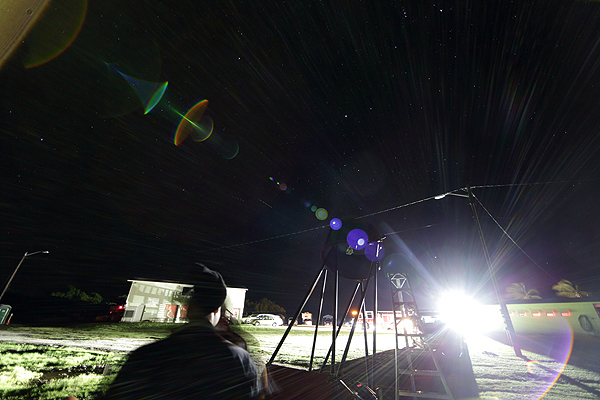 It was a good game, Peyton got his final title to retire on and I was happy that it was not a blowout. In the first image above at the beginning of the article, Al Nagler and Darren Drake look at the sky while I draw an "L", the roman numeral representative of Super Bowl 50, on the wheelhouse using a red laser collimator. We observed intermittently and took breaks to watch the game - or was it the other way around? Sadly the night was interrupted with the bright lights of an ambulance and fire engine due to a medical emergency that sent one SCAS member to the emergency room. The lights illuminated the observing field, and photos (right) showed reflections off of every coated surface in my camera lens. I believe that club member is doing better, and we were fortunate that it didn't happen when the camp was crowded with attendees and their vehicles, and the emergency workers had easy access in and out. It was clear until midnight, and we observed the usual objects in Orion and Canis Major, letting the change in latitude bring about the appropriate change in attitude. That is, we relaxed and forgot about the modern world.... except for the emergency vehicles. A familiar figure appeared in the darkness.... carrying an eyepiece case and with great enthusiasm in his voice that conveyed a bit of a New York accent. It could only be one man. Al Nagler had stopped by with Delite eyepieces, and we decided that they were aptly named. As usual, Al hoped for his "Omega fix", or a good look at the majestic globular cluster Omega Centauri, but the clouds rolled in and delayed his fix for at least one more night. Soon I was heading back to the house for a good night's sleep. 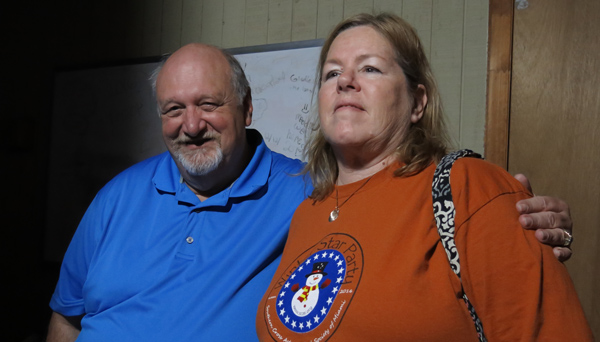 On
Monday I woke at a reasonable hour and decided to go for a run on the
old Seven Mile Bridge, which is now a pedestrian and bicycle-only
bridge at the west end of
Marathon Key. The new bridge parallels it. I think I had a
banana for my breakfast, and headed
out the door into the sunny but cool morning. It was a beautiful
day in the Keys. I was successful in getting a parking space, and
I set out on my run.
This particular morning the bridge was heavily populated with Asian
tourists with their phones and cameras, but I quickly left them behind
because
they didn't venture very far from the shore. There are other
people running or biking on the bridge, but the majority are just out
for a walk. On a morning the previous year, I was waving to
people and saying hello as I passed them, and I distinctly remember one
woman saying "God bless you" as I ran past. Clearly she was not
as motivated to exercise as I was, and I had to laugh. On
Monday I woke at a reasonable hour and decided to go for a run on the
old Seven Mile Bridge, which is now a pedestrian and bicycle-only
bridge at the west end of
Marathon Key. The new bridge parallels it. I think I had a
banana for my breakfast, and headed
out the door into the sunny but cool morning. It was a beautiful
day in the Keys. I was successful in getting a parking space, and
I set out on my run.
This particular morning the bridge was heavily populated with Asian
tourists with their phones and cameras, but I quickly left them behind
because
they didn't venture very far from the shore. There are other
people running or biking on the bridge, but the majority are just out
for a walk. On a morning the previous year, I was waving to
people and saying hello as I passed them, and I distinctly remember one
woman saying "God bless you" as I ran past. Clearly she was not
as motivated to exercise as I was, and I had to laugh.On this beautiful morning I ran to Pigeon Key and half way back, about 3 miles, then walked the last mile for a cool down. It is a great vantage point to watch people speed by heading for Key West, to watch the fishing boats look for their catch, and to watch the water ebb and flow in the shallows under the bridge. If you're lucky and it hasn't been too windy or stormy, the water can be very clear and you can see all of the reefs, sand bars, and the occasional sea creature. Pelicans glide by silently overhead with surprising speed, often surprising you as they quickly pass. It's about as close as you will ever be to joining them as they slice through the air on their hunt for food. After negotiating the sometimes difficult left turn out of the parking lot onto US 1, my stop on the way back to the house was at Publix to load up on healthy stuff from their excellent salad bar. Recharged with protein, vegetables, and superfoods, I got back to the house, ate, and worked on putting the finishing touches on my talk. I found Mike Reynolds doing the same. I enjoyed meeting the Reynolds (pictured in the photo just above at right) very much. Soon it was time to have dinner and head back to the WSP site. After arriving I had the pleasure of meeting Allan Wade and his son Jordan from Australia for the first time in person. Allan is the future owner of a 32" f/3.3 telescope with optics made by me (I am just starting to grind the front of the future mirror as I write this) to be installed in a beautiful SDM telescope built by Peter Read in Australia, complete with an excellent moving-frame mirror cell from JPAstrocraft (John Pratte). It is going to be an incredible instrument, and I hope to get to use it under southern hemisphere skies in the future. The photo below shows Allan, John, and myself standing in front of John's 32" f/3.6 telescope that we would be enjoying for the week. 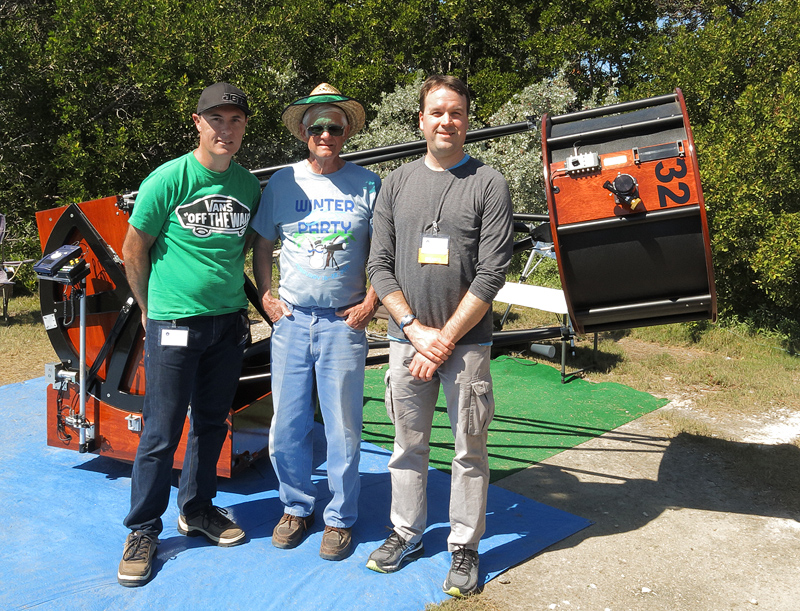 Joe Wambo and Lisa arrived, and I said hello to my good friends from many star parties. The night featured had some clouds, but about an hour of good observing before midnight. We observed some of the usual objects, IC 418, M42, and NGC 15?? (a planetary in CMA), Jupiter looked OK, but not great. This night did not feature the best seeing that the site could offer, but we made the most of it. 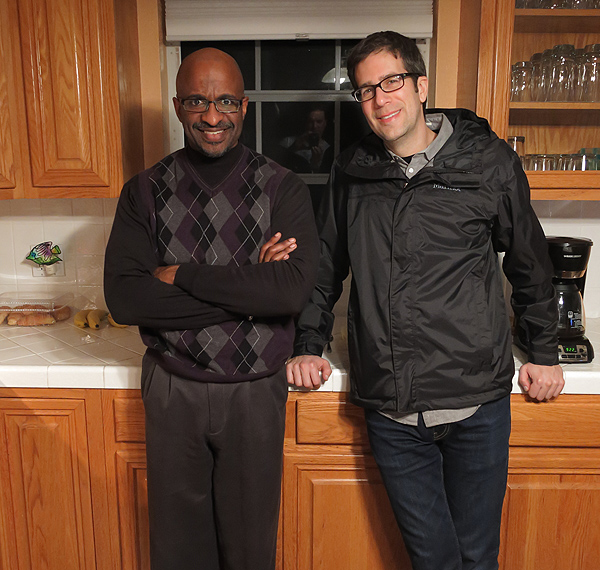 On
Tuesday I finished up fine-tuning my talk, and had an early dinner with
Joe and Lisa at Fish Tales at the east end of Marathon. The food
and dessert were excellent. This night turned out to be
completely cloudy, so I didn't even go to the event site. Instead
I stayed at the house in Marathon and visited with Dean
Regas
(Cincinnati
Observatory Center) and James Albury (Kika
Silva Pla Planetarium, Santa Fe College,
Gainesville, FL) who you might know as two of the new hosts of "The
Star Gazer", the PBS feature that was famously started and hosted
by the memorable Jack
Horkheimer for decades. (Jack's memorable voice and his
opening line for each segment is permanently stuck in my head.) On
Tuesday I finished up fine-tuning my talk, and had an early dinner with
Joe and Lisa at Fish Tales at the east end of Marathon. The food
and dessert were excellent. This night turned out to be
completely cloudy, so I didn't even go to the event site. Instead
I stayed at the house in Marathon and visited with Dean
Regas
(Cincinnati
Observatory Center) and James Albury (Kika
Silva Pla Planetarium, Santa Fe College,
Gainesville, FL) who you might know as two of the new hosts of "The
Star Gazer", the PBS feature that was famously started and hosted
by the memorable Jack
Horkheimer for decades. (Jack's memorable voice and his
opening line for each segment is permanently stuck in my head.)James and Dean did their talks earlier in the day, and they arrived at the house in the early evening (see photo at right). We walked around some of the local streets enjoying the pleasant temperatures and talking about cleaning refractor lenses with Dick Wessling, who sadly passed away several years ago. Dick came to the University of Illinois and helped us clean the 12" Brashear refractor there in its historic observatory, and he also cleaned the 11" Merz refractor at the Cincinnati Observatory, one of the first larger-aperture instruments in the country, circa 1843. We also talked about mirror making, and the star parties that I attend and recommend. Unfortunately, they only stayed one night, and it was cloudy, so they never got to see what big, fast telescopes can do under good conditions. I hope they come back again and stay the whole week. Wednesday dawned less cloudy, and I headed to the site to give my talk later in the day. I always take some time to wander the vendor area at WSP, because there are always good vendors to visit. Below Howie Glatter (left) and Markus Ludes (right) compare binoculars with solar filters, made in anticipation of the 2017 eclipse in the US. They should be excellent sellers. Howie makes excellent laser collimators, and Markus sells many different astronomical products.  I gave my talk about what I have learned about mirror cells recently, and the best current practice for building them (see online article here). It was well received and the room was fairly full. I think that I even managed to keep most people awake despite the important, but not that exciting, subject. After this a bunch of us ventured west to Boondocks a few Keys over to have dinner with much of the WSP staff, and Gary and Vandy Starkweather (formerly from Florida, now permanently living at the New Mexico Astronomy Village), John Pratte, and others. Al Nager and his posse showed up shortly after we did by pure coincidence. We had a delicious dinner of varying seafood entrees, and soon sunset was closing in and it was time to head back to the camp. On Wednesday night there were high clouds early, and it cleared around 11pm. It was cooler still, and a bit breezy, but the trees around our telescopes did their job and allowed us to observe by blocking the abnormal wind that was coming from the north for a good part of this week. (South winds would have brought warmer weather, higher humidity, and steadier seeing.) We observed Sirius, M42, IC 418 (with a more intensly reddish color than previous nights), Horsehead, The Flame, M78, M79, Hubble's Variable Nebula, Eskimo, NGC 2467, a planetary in Taurus whose number I can't recall, the Blackeye Galaxy M64, Jupiter, two galaxy trios in Leo, M51, M81, M82, and a really nice barred spiral that I forget the number of. We tried to view memorable objects in the northern sky that Allan and Jordan could not see from their native ~32º S latitude, and they enjoyed it greatly. I think that we showed them views of M51 that they will remember for a longtime - I certainly will because it was late at night and it was high in the sky. I called it quits before the showpiece southern objects rose and got some sleep. Good thing I did. On Thursday morning it was time to run the bridge again, and I took a nice long break at at Pigeon Key in the middle of it to enjoy the quiet and the perspective. It was interesting looking at the small houses that were there and watching the golf cart shuttle supplies from the dock to where they needed to go. It would be a quiet place to spend a few days if I had the time and inclination, but I've never really done that much fishing, which appears to be a major activity, as well as day and summer camps (see link earlier in this article). After lingering for a bit, I ran for a mile or so and walked back to my car. 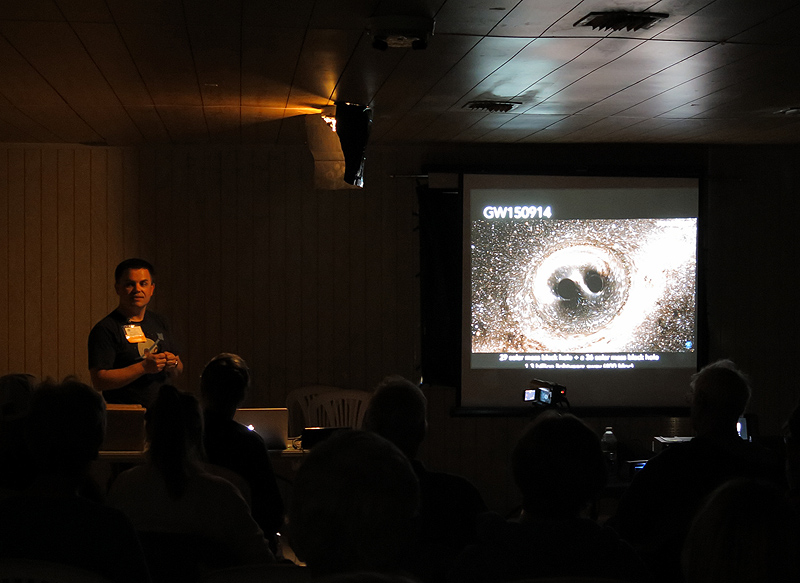 In the afternoon I attended a couple of talks. The first was an excellent talk about the Challenger disaster given by Dr. Mike Reynolds. The second was a revelatory talk about the gravity wave detection project that featured an announcement of a real gravity-wave detection of two merging black holes, on the day of the official announcement, by actual research team member Shane Larson from Northwestern University. The photo above is a snapshot of that second talk. What could be better, hearing about history being made by a member of the team that helped make it, on the very day that it was officially released to the public! 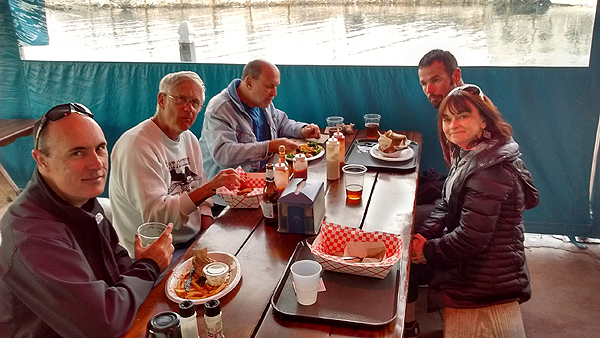 Soon
we
piled into Bob Schilling's van and headed for Marathon to have
dinner at Keys
Fisheries
with Bob Schilling, John Pratte, and Allan and Jordan Wade. As
usual, the food was excellent, and we were full
when leaving. I should have emptied my bladder because we got
stuck in a big traffic jam on the way back caused by an earlier
accident that happened in Big Pine, several miles ahead.
Allan and I were both in the same situation, so we exited Bob
Schilling's van, walked briskly across the rest of the bridge jammed
with cars (which is something that you would not normally get to do),
took care of business, and then walked the rest of the way back to the
camp. It was a nice stroll, actually, and it woke us back up
after a good sized meal. The night air was cool, the sky was
clear, and that bode well for the night ahead. Below we see the
traffic jam from a bridge, but the bonus was we got to see a nice
sunset. We just got to see it for a bit too long. Soon
we
piled into Bob Schilling's van and headed for Marathon to have
dinner at Keys
Fisheries
with Bob Schilling, John Pratte, and Allan and Jordan Wade. As
usual, the food was excellent, and we were full
when leaving. I should have emptied my bladder because we got
stuck in a big traffic jam on the way back caused by an earlier
accident that happened in Big Pine, several miles ahead.
Allan and I were both in the same situation, so we exited Bob
Schilling's van, walked briskly across the rest of the bridge jammed
with cars (which is something that you would not normally get to do),
took care of business, and then walked the rest of the way back to the
camp. It was a nice stroll, actually, and it woke us back up
after a good sized meal. The night air was cool, the sky was
clear, and that bode well for the night ahead. Below we see the
traffic jam from a bridge, but the bonus was we got to see a nice
sunset. We just got to see it for a bit too long.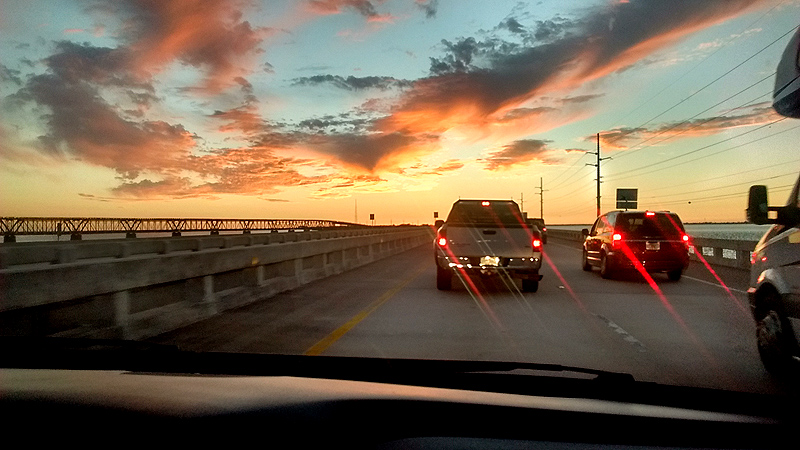 It was to be the best night of observing yet for the week, and it really got going after the mirrors cooled off an hour or two into the night. We viewed many objects early in the evening, and it was clear that the seeing was pretty good, not the best we have seen, but better than previous nights this week. I'd give it a 7 out of 10 on a scale with 10 being the best that I've seen at WSP. The objects were too numerous to remember and list, but Thor's Helmet was superb and showing a lot of detail. It still looks like the head of a frog and its front legs to me. It wasn't a 1000x+ night, but we ended up getting up to 700x or 800x or so. Around 2am or just after, I finally convinced the 32" owners to look at Eta Carina, low on the southern horizon but as high as it would get from our location, and it would not be that high for long. It's always interesting to squat down on the ground and view an object with a 32" telescope, and it was definitely worth it! We had the best view of Eta Carina that I have ever seen, and I got to enjoy the view with a 32", too! Each observer reveled in slewing the scope around several fields of nebulosity divided by distinct dark lanes. I think even Allan, the southern hemisphere guy, was impressed at what a good 32" scope could reveal at this low altitude in the sky. The Nebula is simply huge, and even five degrees above the horizon there were more interesting bits to see in all of the real estate that it takes up in the sky than in the Orion Nebula, in my opinion. Or maybe it was just the late hour that made me perceive it in that way. I can't wait to see it from Allan's latitude some day! 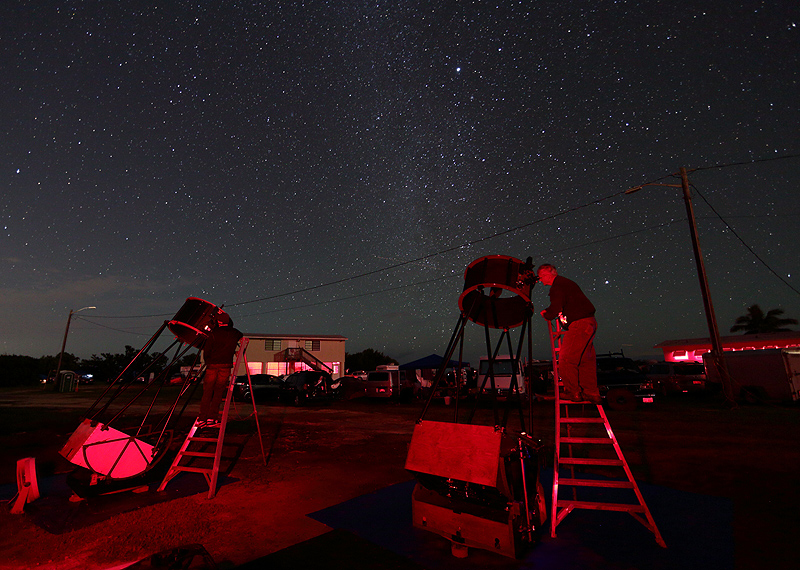 The images above show the 32" scope owners - Joe observes through his 32" telescope at left, and John observes through his 32" at right. Canopus appears behind John, and Sirius is seen well above his telescope. Soon the globular cluster Omega Centauri rose high enough to be viewed with the 32"s, and Al Nagler finally got his Omega fix for the year. Next we looked at Centaurus A, and then a variety of other objects in Centaurus that were recommended by southern hemisphere expert Allan. At one point in the night, there were two simultaneous shadow transits and a moon transit all crossing Jupiter at the same time. Those were observed in fairly good detail, especialy as the transiting moon moved off of Jupiter's disk. Mars rose later on, but it was too low to show much detail. I called it a night around 4am and headed back to Marathon to sleep in. In the image below, the immense Eta Carina emerges just above the building, to the left of the left palm tree. Also the immense Omega Cenaturi is just to the right of the top of the ladder. At this time of night, just after 2am, the Milky Way lies down parallel to the southern horizon, which is the ocean at this site, but just above it. It helps add to the illusion of stars continuing undimmed to the horizon. It is always inspiring to walk over to the berm and watch the southern stars shine over nothing but water. 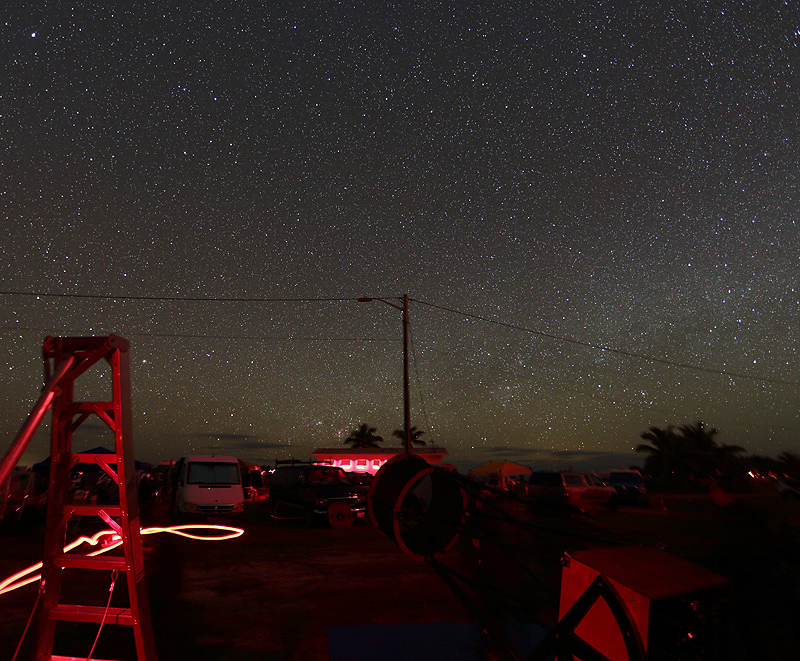 Friday dawned as another beautiful day, and I wanted to get up at a reasonable hour and get back to the camp for the 11am door prize drawing, so sleep was in short supply. It was a good thing that I did, because I won a small sample of meteorites. In the photo below, from left to right, are John Pratte, myself, Allan, and Sergio. 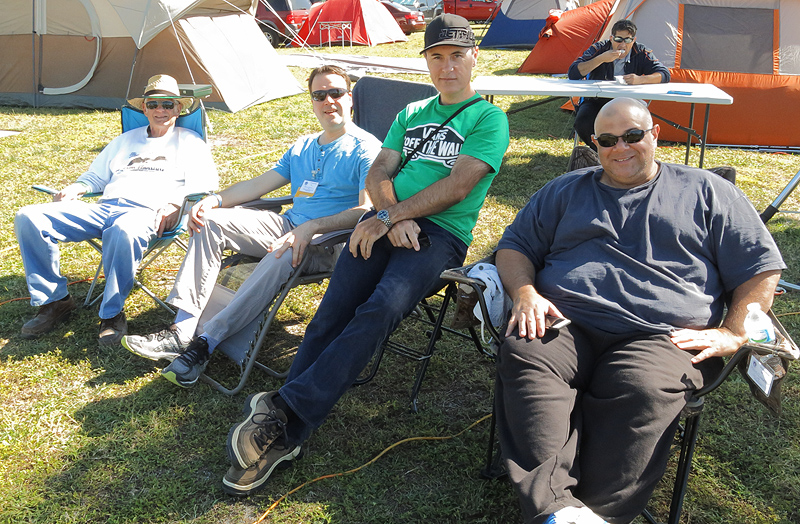 I hung around camp, visited with Gary and Vandy in their RV, and headed to dinner with Markus and family, Howie and his wife, and Dirk (of Infinitees) and his wife. Our destination was the Sunset Grille. Faced with a long wait, we had a beer and enjoyed the actual sunset from this excellent vantage point. The photo below shows Markus Ludes and Andy Lunt (Lunt Solar Systems) in the red light of near-sunset at the restaurant. 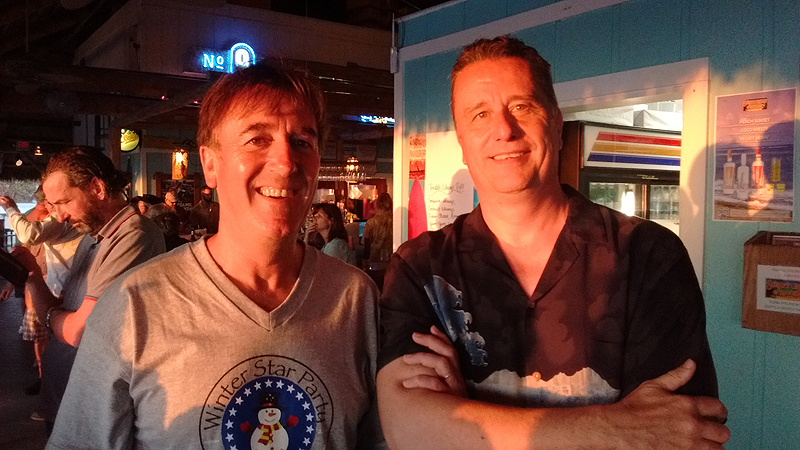 It was cool, and I had a jacket fortunately. The food was excellent and was worth the very long wait. The sunset below was worth it, too. I guess the pool had to be warm for the people in it to enjoy it, or else maybe they're Canadian.  We got back well after dark, and had another night quite similar to Thursday - cool and breezy but with fairly good seeing. We found ourselves sitting in our chairs just enjoying the sky, though we had a bit more clothing on than we would have liked. Soon fatigue set in for me. I wanted to get out of the Keys at a reasonable hour, so I left around midnight and went back to the rental house. I had to try out the pool for a few minutes at least before scrambling back inside to shower and warm up and pack what I could before heading to bed. Saturday morning came too early, and I packed up my car, checked the house for things that might have been left behind, packed my cooler with leftover food in the fridge, made a cup of coffee, returned the keys to the rental agency, and headed north to my relatives' place, where I arrived around 2:30pm, a record for my fleeing the Keys to avoid traffic. I went for a run, and then we enjoyed margaritas around a nice fire in the evening. Another Winter Star Party was complete. Below is a last photo of John, myself, Allan, and Jordan. 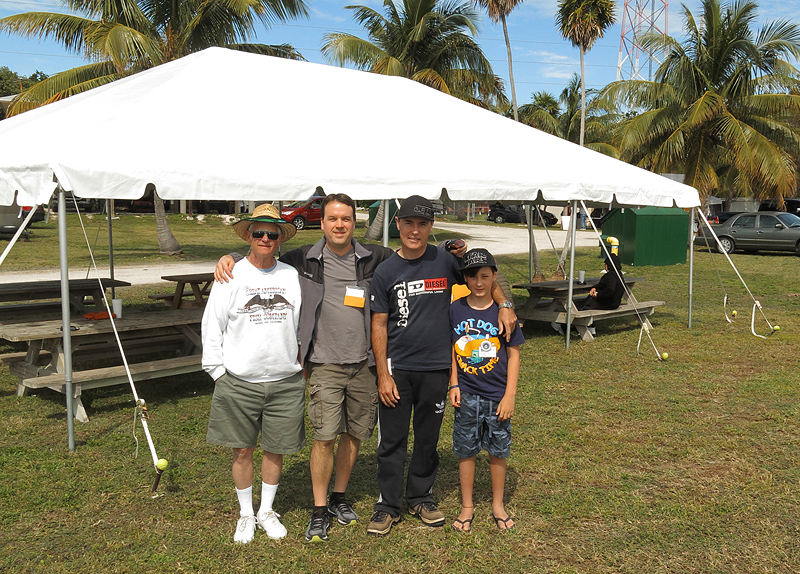 My time in Florida was not done, though, as I spent quite a while working on my waterskiing for the next week just east of Orlando and visiting with my parents, who had come to visit my uncle and his wife on the east coast. That was the vacation portion of my trip, mostly free of astronomy except to enjoy some nice halos around the moon later in the week. Of course, as luck would have it, as it had the previous two times I had returned from Florida, it was snowing when I got back to Illinois. In November when I returned from Chiefland there were several inches on the ground, and returning from WSP 2015, I found about 10" in my driveway. This time it was nearly blizzard conditions for the last ~50 miles of driving, and I took it slow and my Subaru got me home to find that, of course, the power out and the house getting cool. Clearly I should have stayed longer, and next time I will. |
As I finish writing this article, I am in the middle of another grinding campaign (I grind many mirrors in a batch because it's more efficient that way), including Allan's 32" f/3.3. It's always fun to think about some time in the future when you actually get to use the telescopes that will contain the optics that you are working on now. Clear, dark skies, warm weather, good friends, good seeing, and cheers. See you at WSP 2017. -Mike Lockwood, Lockwood Custom Optics |